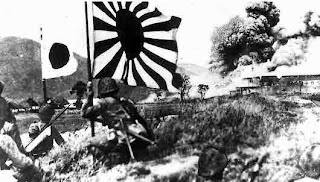Angela Merkel: I think history and experience tell us also that peaceful means of reconciliation have to be found
TOKYO: German Chancellor Angela Merkel waded into the fraught area of wartime forgiveness during a visit to Japan, saying that “facing history squarely” and “generous gestures” are necessary to mend ties.
Merkel was speaking in Tokyo on March 9 2015 ahead of the 70th anniversary of Japan’s defeat in World War II, in which Prime Minister Shinzo Abe’s conservative views on Tokyo’s war crimes are under scrutiny, and as China and South Korea continue to call for more contrition.
“Germany was lucky to be accepted into the community of nations after the horrible experience the world had to meet with Germany during the period of National Socialism (Nazism) and the Holocaust,” she said.
“This was possible first because Germany did face its past squarely, but also because the Allied Powers who controlled Germany after WWII would attach great importance to Germany coming to grips with its past.
“One of the great achievements of the time certainly was reconciliation between Germany and France ... the French have given just as valuable a contribution as the Germans have.”
Relations between Japan and its wartime victims China and South Korea are at a low point, with Beijing and Seoul both calling for Tokyo to do more to atone for its past.
Nationalists in Japan say Tokyo has apologised enough and that the constant references to WWII are covering flak for governments in China and South Korea seeking to direct popular anger elsewhere.
There were “great minds and great personalities who said we ought to adopt a policy of rapprochement ... and without these generous gestures by our neighbours this would not have been possible,” Merkel told her audience.
The public lecture came on the first day of a two-day trip to Tokyo, her first in seven years.
Abe visited Germany last year.
China’s foreign minister Wang Yi on Sunday said Abe would be welcome at Beijing’s commemorations of the end of WWII if he was “sincere” about history.
Beijing has not given a specific date for the parade but it regards Sept 3, the day after Japan signed its formal surrender to Allied forces on board the USS Missouri in Tokyo Bay, as victory day.
“It’s difficult for me as the German chancellor to give you advice on how to deal with part of your neighbourhood. But I think history and experience tell us also that peaceful means of reconciliation have to be found,” Merkel said in response to questions.
Merkel’s visit to Japan is part of her swing through G7 member nations before Germany hosts the group’s next summit in June. She has already visited the other five nations.
The visit, her third to Japan in almost 10 years in office, is seen as a balancing act between Germany’s ties with Beijing and Tokyo. She has been to China seven times during the same period.
Thanking Japan for joining Western powers in imposing sanctions on Russia over its annexation of Ukraine, Merkel said: “Japan and Germany share common interests whenever the strengthening of the international rule of law is to be brought about.” — AFP
Related posts:
 China plans parade for war anniversary
China plans parade for war anniversary
Chinese
President Xi Jinping and Zhang Dejiang, chairman of the Standing
Committee of the National People's Congress, attend a state
commemoration for China's first National Memorial Day for Nanjing
Massacre Victims in ...
China
said on Thursday UNESCO has accepted its application to register
records of the 1937 Nanjing Massacre and Japan's wartime sex slaves on
the Memory of the World Register. The documents listed by China are ...















